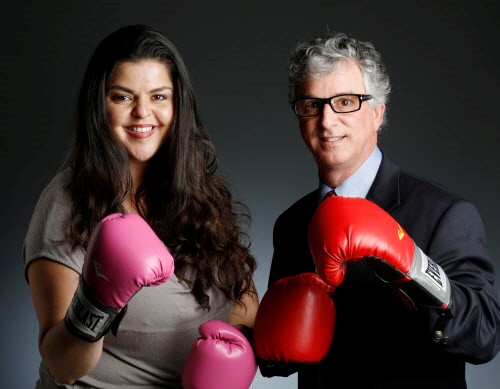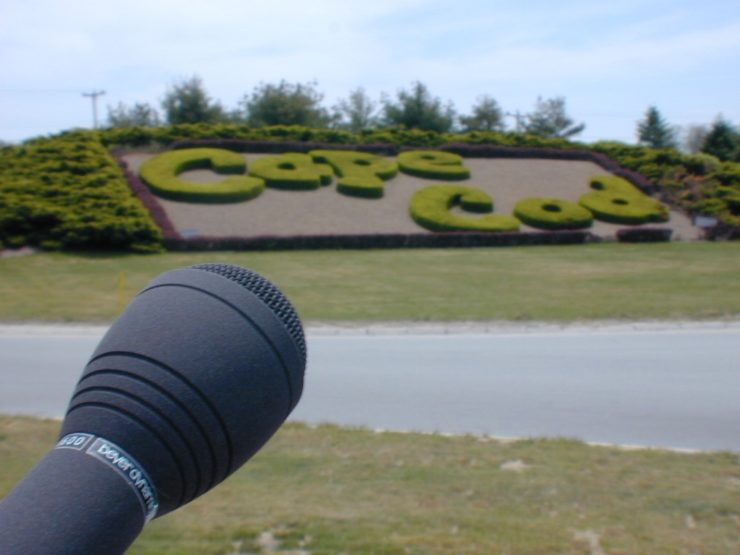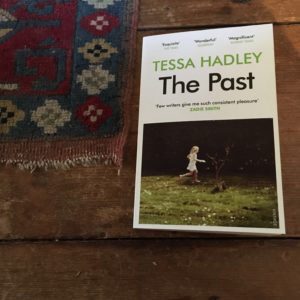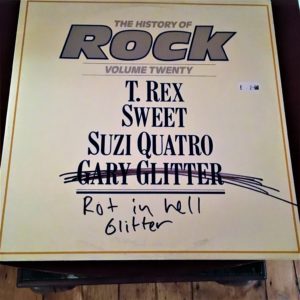
A Cape Cod pier.
This is a very “audio” week on Storyboard, and I’d like to have more of them. Storytelling has so many forms, and sometimes we hear stories better than we read them. It’s almost like you’re a child and listening to bedtime stories again, the familiarity of it. In this case, one of my favorite Storyboard posts in recent memory is Lee Romney’s interview with Jay Allison, who created the audio “poems” that are the sweet station identifications for his Cape Cod station, WCAI. Follow me down the rabbit hole of regional oral storytelling with this post, below. And just as compelling are the audio diaries of a Saudi teenager who narrates her life for NPR.

Consumer reporters Marina Trahan and Dave Lieber.
“The Watchdog” on the importance of storytelling in consumer reporting. As contributor Julissa Treviño writes, “You might not think of consumer columnists as narrative storytellers, or investigative reporters. But journalist Dave Lieber, “The Watchdog” for the Dallas Morning News, is a big fan of the creative-writing techniques of the New Journalism movement of the 1960s and says the biggest difference between him and other investigative reporters is ‘I do mine in a day and a half.'” Another great quote from the piece: “Out of all the jobs I’ve had in journalism in 42 years, this one is the most reader-driven. It’s like I have a million assignment editors.” (Reporters, answer this quiz: Does this make you A) Say “this is a dream come true!” or B) Run screaming from the room?
The soundtrack: “Watchdogs,” by UB40. When was the last time I thought of this band? Granted, they’re not hugely original. But they make you feel good, somehow. And this is a pretty fitting lyric for the post: “Give thanks for you protection/Your watchdogs of the night/Who hold the hungry wolves at bay/And keep them out of sight.”
One Great Sentence
“No single gesture would do more to demonstrate continuity and stability — to show that the government of the United States would continue to function without interruption despite the assassination of the man who sat at its head — and to legitimize the transition: to prove that the transfer of power had been orderly, proper, in accordance with the Constitution; to remove, in the eyes of the world, any taint of usurpation; to dampen, so far as possible, suspicion of complicity by him in the deed; to show that the family of the man he was succeeding bore him no ill will and supported him, than the attendance at this swearing-in ceremony of the late President’s widow.”
LBJ biographer Robert A. Caro in the book “The Passage of Power.” Read why we think it’s great.

"Sonic IDs" records the sounds and stories of the Cape.
Radio storytelling pioneer Jay Allison and the bite-size “Sonic IDs.” Allison was recently honored at The International Documentary Film Festival Amsterdam for Sonic IDs, bite-sized vignettes that have aired throughout the day on his Cape Cod station, WCAI, since its founding instead of standard station identifications, those mandatory listener reminders of a station’s call letters. They interrupt the expected with the voices and sounds of life on the Cape. His answers are chock full of gems, including: “The best ones really arrest you. You feel momentarily confused, which I think focuses your mind. It’s like if you feel like you’re getting lost a little bit, you begin to pay attention to your surroundings.”
The soundtrack: “Theresa’s Sound-World,” by Sonic Youth. Of course I had to go with Sonic Youth for this post, and bonus: The word “sound” is in the title! If you’re of a certain age and have certain proclivities, this was a go-to band for you. Personally, I was more in the Pixies camp, but Sonic Youth was great.
What I’m reading online: Majd’s Diary: Two Years in the Life of a Saudi Girl. Actually, I didn’t read this online — I listened to it. This NPR broadcast is a wonderful combination of the “exotic” and the familiar. Majd, a 19-year-old, takes us through her day. She wakes up and does her stretches, counting them in Japanese. She introduces her brother, who’s eating cornflakes. “In Arabic, it’s cornaflakes,” she says. Later, she becomes more serious, talking about her plan to get a postdoctoral degree. “You know, it’s the norm for girls to study now. It’s not strange. It’s not a big deal.”
Nigeria Brought Back Its Girls — Now Comes the Hard Part, by Joe Parkinson and Drew Hinshaw. This is another piece looking at the lives of teenage girls, but their lives are full of sorrow. They were kidnapped by the Boko Haram in 2014 and lived three years in captivity, experiencing horrors they can’t even talk about. But the Wall Street Journal story is full of hope too, that they might continue to find strength in one another, and overcome their ordeal.
The White Darkness, by David Grann. This New Yorker piece is the opposite of the first two stories — it’s hyper-masculine. But in some ways it has parallels to the story about the Nigerian girls, because it is about endurance, about battling the hardest experience imaginable. Needless to say, Grann is a master storyteller. I hope to spotlight this further on Storyboard in the future, so I’ll stop there. But read it.
 What’s on my bedside table: “The Past,” by Tessa Hadley. The photo on the cover grabbed me: a slightly out-of-focus shot of a little girl running on green grass as a somehow ominous-looking rabbit sits nearby. But the quote from Zadie Smith on the same cover was the clincher: “Few writers give me such consistent pleasure.” Sold. Here’s a nice observation near the beginning: “Alice was painfully stalled by beginning to lose her looks. She had always believed that it was her personality and intelligence which gave her what power she had. Her looks she had taken for granted.”
What’s on my bedside table: “The Past,” by Tessa Hadley. The photo on the cover grabbed me: a slightly out-of-focus shot of a little girl running on green grass as a somehow ominous-looking rabbit sits nearby. But the quote from Zadie Smith on the same cover was the clincher: “Few writers give me such consistent pleasure.” Sold. Here’s a nice observation near the beginning: “Alice was painfully stalled by beginning to lose her looks. She had always believed that it was her personality and intelligence which gave her what power she had. Her looks she had taken for granted.”
 What’s on my turntable: “The History of Rock Volume Twenty: T. Rex, Sweet, Suzi Quatro, Gary Glitter.” I would have bought this just for the first three acts (“Bang a Gong!” “Fox on the Run!” “The Wild One!”), but the clincher was the inked line through Glitter’s name and the scrawled words, “Rot in hell Glitter.” The convicted child molester/predator has had a long, and deserved, fall from grace. (And besides, he always was a bit ridiculous.) The other acts, though, are such fun to listen to. Yes, even Sweet. Call it a guilty pleasure. (And sorry, the album isn’t on Spotify, so I’m including a link to “Fox on the Run.”)
What’s on my turntable: “The History of Rock Volume Twenty: T. Rex, Sweet, Suzi Quatro, Gary Glitter.” I would have bought this just for the first three acts (“Bang a Gong!” “Fox on the Run!” “The Wild One!”), but the clincher was the inked line through Glitter’s name and the scrawled words, “Rot in hell Glitter.” The convicted child molester/predator has had a long, and deserved, fall from grace. (And besides, he always was a bit ridiculous.) The other acts, though, are such fun to listen to. Yes, even Sweet. Call it a guilty pleasure. (And sorry, the album isn’t on Spotify, so I’m including a link to “Fox on the Run.”)
If you want to chat about storytelling (or music), I’m Storyboard editor Kari Howard, and you can reach me at editor@niemanstoryboard.org. Or you can find me at @karihow on Twitter.


